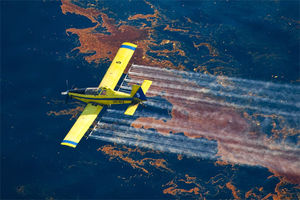Health
Long commutes could damage your healthPlace: Washington, DC | Agency: IANS
|
|
|
|
Explained: Why kids prefer high-calorie snacks over fruitsPlace: Washington, DC | Agency: ANI
|
|
|
|
Yoghurt can make you ‘slimmer and sexier’Place: Washington, DC | Agency: ANI
|
|
|
|
***********************************************************************************************
Holistic Health
This Food Contains 100 TIMES More Probiotics than a Supplement
- Abnormalities in your immune system—such as allergies and autoimmune diseases—are a common outcome of Gut and Physiology Syndrome (GAPS), as about 85 percent of your immune system is located in your gut wall
- The answer to resolving food allergies, as well as virtually all autoimmune disorders, is to heal and seal your intestines, which the GAPS nutritional program is designed to do
- Fermented foods are both potent chelators (detoxifiers) and contain far larger amounts of probiotics, compared to probiotic supplements, making them ideal for maintaining optimal gut flora
- If you’ve never eaten fermented foods before, too large a portion may provoke a healing crisis, which happens when the probiotics kill off pathogens in your gut. When the pathogens die, they release potent toxins. If you’ve never had fermented foods in your life, you need to start very carefully and very gradually, beginning with as little as one teaspoon of sauerkraut with one meal. Observe your reactions for a couple of days before proceeding with another tiny portion

Heart-healthy foods that lower blood pressure, reduce symptoms of plaque and improve cardio fitness
By JB Bardot,
(NaturalNews) The foods you eat bring pleasure to your palate and provide your body with powerful healing substances. Most people probably never consider that their morning grapefruit protects their blood vessels or that eating a handful of raw almonds daily can protect them from cancer. Certain heart-healthy foods have a reputation as natural cures to lower blood pressure, reduce symptoms of plaque and improve cardio fitness. Animal proteinsAnimal proteins like fresh fish and seafood are high…

Beat Fibromyalgia naturally
By Dr. David Jockers,
(NaturalNews) Fibromyalgia is a chronic inflammatory condition consisting of muscular and joint pain and fatigue. Three to five percent of the population suffers with this condition with over 80% being women. This is one of the fastest growing disabling conditions in the US. Beat fibromyalgia now with natural lifestyle strategies. Fibromyalgia is classically diagnosed with positive reaction to 11 of 18 specific tender point sites on the body. Other classic findings include chronic fatigue, sleep…
***********************************************************************************************
Pet Health
How to Heal Your Pet’s Food Allergy
By Dr. Becker
Today I want to discuss novel protein diets, because a lot of dogs and cats these days have food allergies.
In addition to chronic or intermittent GI disturbances like vomiting, diarrhea and loose stools, often food allergies show up as skin problems.
So itchy rashes, hot spots, bald spots, inflamed skin, and even recurrent ear infections can all be symptoms of food allergies.
There are many additives in commercial pet food that can cause allergic reactions, but most often your dog or cat will develop sensitivity to one of the main ingredients in the food you’re feeding – usually a protein or carbohydrate.
Puppy is suspicious of broccoli
Uploaded by cinnamommieon Feb 14, 2012
My mother-in-law’s 7 week old Pomeranian puppy gave us an unexpected reaction to broccoli when a piece fell onto the floor while preparing dinner tonight.
UPDATE: Yes this is my video. I took it with my iphone on Valentine’s day at my mother in law’s house.
Pomeranians are notorious barkers, but this video is the first time the puppy ever barked in his life. My mother in law says she has since tried other vegetables and items but he only gets angry at broccoli. He still does this.
When Some Pet Food Companies Say They Use Only “Human Grade” Ingredients, They Mean It!
By Dr. Becker

- Last year the owners of a small pet food company decided to prove the integrity of their ingredients by eating their own dog food for a month, bringing a whole new meaning to “human grade” pet food!
- AAFCO doesn’t define “human grade” or “human quality” ingredients and in fact, forbids pet food manufacturers from using the term on package labels. However, there ARE pet food companies out there who do indeed use human grade ingredients in their formulas.
- The best way to learn which pet food manufacturers use human grade ingredients is to look for small companies with relatively expensive product lines (edible is more costly than inedible). Visit their website for information on the quality of pet food ingredients they use. You can also chat with some companies online, send an email, or call for more information.
Read Full Article Here
***********************************************************************************************
Positivity Mind and Body
Staying in the Now: Mental Health Through Mindfulness
Uploaded by UCtelevision on Jan 21, 2010
Dr. Stuart Eisendrath, director of the UCSF Depression Center, explores mindfulness as a technique for maintaining mental health. Series: UCSF Mini Medical School for the Public [2/2010] [Health and Medicine] [Show ID: 17626]
***********************************************************************************************
Articles of Interest
Another victim of conventional cancer treatments: Beastie Boys co-founder Adam Yauch dead at 47
By Jonathan Benson,
(NaturalNews) After undergoing nearly three years of conventional treatments for a rare form of cancer, Adam Yauch, co-founder of the hardcore punk-turned-hip hop music group Beastie Boys has died. The 47-year-old is the latest high-profile individual to have suffered the fate of conventional cancer treatments, which more likely than not were the ultimate cause of his demise. In July 2009, Yauch reportedly announced in a video to his fans that he had been diagnosed with cancer of the parotid gland…
EPA Grossly Misrepresents The Toxicity Of Corexit Used In Gulf Of Mexico
Activist Post
Quite incredibly, the EPA issued a positive report on May 1, 2012 regarding the safety and toxicity of various dispersants used in the BP Gulf Oil Spill. Included in this assessment was the use of Corexit.
This report “indicated that all eight dispersants had roughly the same toxicity,” and all fell into the “practically non-toxic” or “slightly toxic” category. Scientists found that none of the eight dispersants displayed endocrine-disrupting activity of “biological significance.”
The same report went on to say that “dispersant-oil mixtures were generally no more toxic to the aquatic test species than oil alone.”
The first question that jumps out for those who have researched this subject with any degree of thoroughness is how this recent report fails to reconcile with previous studies performed by the EPA.
Here is some test data retrieved from the EPA website that was posted previous to the BP Gulf Oil Spill.
The dispersant (Corexit 9500) and dispersed oil have demonstrated the following levels of toxicity per the EPA website link that follows:
(1) 10.72 parts per million (ppm) of oil alone will kill 50% of the fish test species in a normal aquatic environment within 96 hours.
(2) 25.20 parts per million of dispersant (Corexit 9500) alone will kill 50% of the fish test species in a normal aquatic environment within 96 hours.
(3) 2.61 parts per million of dispersed oil (Corexit-laden) alone will kill 50% of the fish test species in a normal aquatic environment within 96 hours.
This data diverges from the recent report to such a significant degree that the results which were just posted at the EPA.gov website under the title of “The BP Oil Spill: Responsive Science Supports Emergency Response” must be seriously scrutinized.
What is the buying public to make of such conflicting data? Those who have medical conditions which require complete avoidance of toxic seafood need to know with certainty what they are eating.
Likewise, the fishermen in the Gulf need to know the true condition of their catch. Swimmers and beachgoers need to know the state of the water, as well as the beaches. Boaters ought to be informed of the relevant risk factors when out in the areas of recently sprayed waters, whether surface or deep sea.
The most serious questions to emerge from this report revolve around the issue of credibility. Can the EPA ever be trusted again to conduct the necessary research regarding anything having to do with the Gulf of Mexico oil spill caused by BP?
Issuing such blanket statements about the relatively low toxicity associated with this spill, irrespective of location on the beach, in the waters, in the wetlands or estuaries, seems to be quite disingenuous.
Furthermore, the federal government’s declaration that the “clean up phase” of the Deepwater Horizon spill is over begs for review, especially in light of the large quantities of submerged oil unaccounted for residing in the water column, DOJ’s discovery of false flow rate numbers reported by BP and new sightings of oil slicks all over the Gulf.
In light of all that, the clean up phase is not over and further use of Corexit dispersant isn’t an effective solution.
Moreover, the fact that the EPA has approved for use a very safe bioremediation agent known as Oil Spill Eater II, but has yet to allow its use in the Gulf raises many additional questions.
From our investigation, it has become clear that Corexit has been given preferential treatment over other much safer alternatives. The Gulf Oil Spill Remediation Conference (GOSRC) was quoted as follows in this regard:
When we heard about Oil Spill Eater II, and the fact that it is EPA-approved (NCP listed) and has demonstrated its effectiveness at least 14 times for the BP Gulf Oil Spill, we wondered why it wasn’t being used 24/7.
The GOSRC went on to issue a press release entitled: Coalition Of Enviro, Citizens And Political Groups Demand COREXIT Use Be Stopped which pointed out the deliberate false image which has been created around the use of this toxic dispersant – Corexit 9500.
The Gulf Rescue Alliance (GRA) also made the recent observations in their press release entitled: BP Gulf Oil Spill Revisited.
Many of these studies point out the obvious; that when you mix a tremendous volume of released oil with methane gas and further mix it with a toxic dispersant like Corexit, as they have done throughout this oil spill, a chemical cocktail is created that will have as far-reaching ecological ramifications as it will profound environmental consequences.
The Earth Orgainization (TEO) has also weighed in on this issue through their release of an excellent documentary entitled: Hidden Crisis in the GULF. Barbara Wiseman, TEO President, has been an ardent advocate for safer oil remediation measures since the very beginning of this oil spill. She has said that:
At the beginning of the disaster, TEO investigated to find effective, non-toxic technologies currently available in adequate supply to clean up an oil spill of this size. Once we isolated the best solutions, we then investigated to find what the barriers to getting them implemented were. The barriers have all come down to specific people in the EPA. They are, in effect, holding the Gulf hostage and, for some unexplained reason, won’t let it be cleaned up.
Lastly, perhaps the words of Steven Pedigo reflect the voice of reason more than any other in this ongoing oil spill when he was quoted in A 2nd Anniversary Report on the BP Gulf Oil Spillas follows:
The toxic dispersants add absolutely nothing to EFFECTIVE RESPONSE. There is no scientific basis for it, and their use violates The Clean Water Act, EPA’s charter and common sense.
Corexit’s label clearly states it can cause kidney failure and death and the MSDS (Material Safety Data Sheet) specifically warns, ‘Do not contaminate surface water with it. Additionally, toxicity testing in regards to marine species shows little tolerance by all forms of sea life; thus, applying it on spills as a preferred response method increases the toxicity of the spilled oil on which it is used.
GSK gets approval for acne treatment in USA
GlaxoSmithKline’s acne treatment Fabior has been given the green light by regulators in the USA.
The US Food and Drug Administration has approved GSK unit Stiefel’s Fabior (tazarotene) foam, 0.1%. The company noted that it is the only retinoid in a topical foam formulation for the treatment of acne vulgaris in patients aged 12 and older.
Europe gives conditional OK to Cell Therapeutics’ Pixuvri
Cell Therapeutics has won conditional approval in Europe for its lymphoma drug Pixuvri.
The European Commission has given the green light to Pixuvri (pixantrone) as monotherapy for the treatment of adults with multiply relapsed or refractory aggressive non-Hodgkin B-cell lymphomas, making it the first approved treatment in this patient setting in the continent. The decision covers the 27 member states of the European Union, plus Iceland, Liechtenstein and Norway.
US FDA urged over biosimilars
Patient safety must be “a non-negotiable priority” for the US Food and Drug Administration (FDA) and drug-makers as they seek to bring biosimilar medicines to market, and that focus “does not end with drug approval,” regulators have been told.
“Put patients first and sound policy will follow,” Joseph Miletich, senior vice president of R&D at Amgen, advised the FDA, speaking at an agency hearing.
Related Links
Global framework for biosimilars is now crucial Amgen calls for clinical trial clarification on biosimilars Fitch looks at implications of FDA biosimilar guidance
Noting the complexities of biological products and the potential differences in products created from different living cells, Dr Miletich emphasized that biotechnology is an evolving field. “While much more is known today than 30 years ago, FDA’s guidance documents should candidly acknowledge that there are some things we still do not scientifically know today,” he told the hearing.
As the FDA finalizes its guidances for the development of biosimilars, it must adopt policies to facilitate attribution of adverse events and foster manufacturer accountability, he added. The arrival of biosimilars in the US marketplace will significantly increase the challenge and importance of accurate tracking and tracing, and the use of distinguishable established names will facilitate prompt identification and resolution of product problems, he suggested.
FDA advisors OK Gilead’s Truvada to cut HIV risk
Gilead Sciences had some great news at the end of last week after US regulators backed two drugs from its HIV portfolio – Truvada for reducing the risk of contracting the disease and its four-in-one Quad pill to treat it.
Related Links
Quad boost for Gilead Truvada label expansion under fire Gilead s Quad HIV drug moves closer to filing Gilead gets speedy review for HIV prevention drug Gilead s Truvada combo fails again
First up, in what some consider to be a controversial decision, the Antiviral Drugs Advisory Committee of the US Food and Drug Administration has voted in favour of approving Gilead’s once-daily pill Truvada (emtricitabine and tenofovir disoproxil fumarate) to reduce the risk of HIV-1 infection among uninfected adults.
Members of the panel voted: 19 to 3 in favor of approving Truvada for pre-exposure prophylaxis (PrEP) in men who have sex with men (MSM); 19 to 2 in support of its use in HIV-uninfected partners in serodiscordant couples; and 12 to 8 in others at risk of contracting HIV through sexual activity.
The positive recommendation comes on the back of data from several clinical studies showing the use of Truvada for PrEP to be safe and effective, including the 2,499 subject iPrEx study, in which a group of MSM taking PrEP Truvada had 43% fewer infections than those taking a placebo.
***********************************************************************************************
[In accordance with Title 17 U.S.C. Section 107, this material is distributed without profit, for research and/or educational purposes. This constitutes 'FAIR USE' of any such copyrighted material.]























